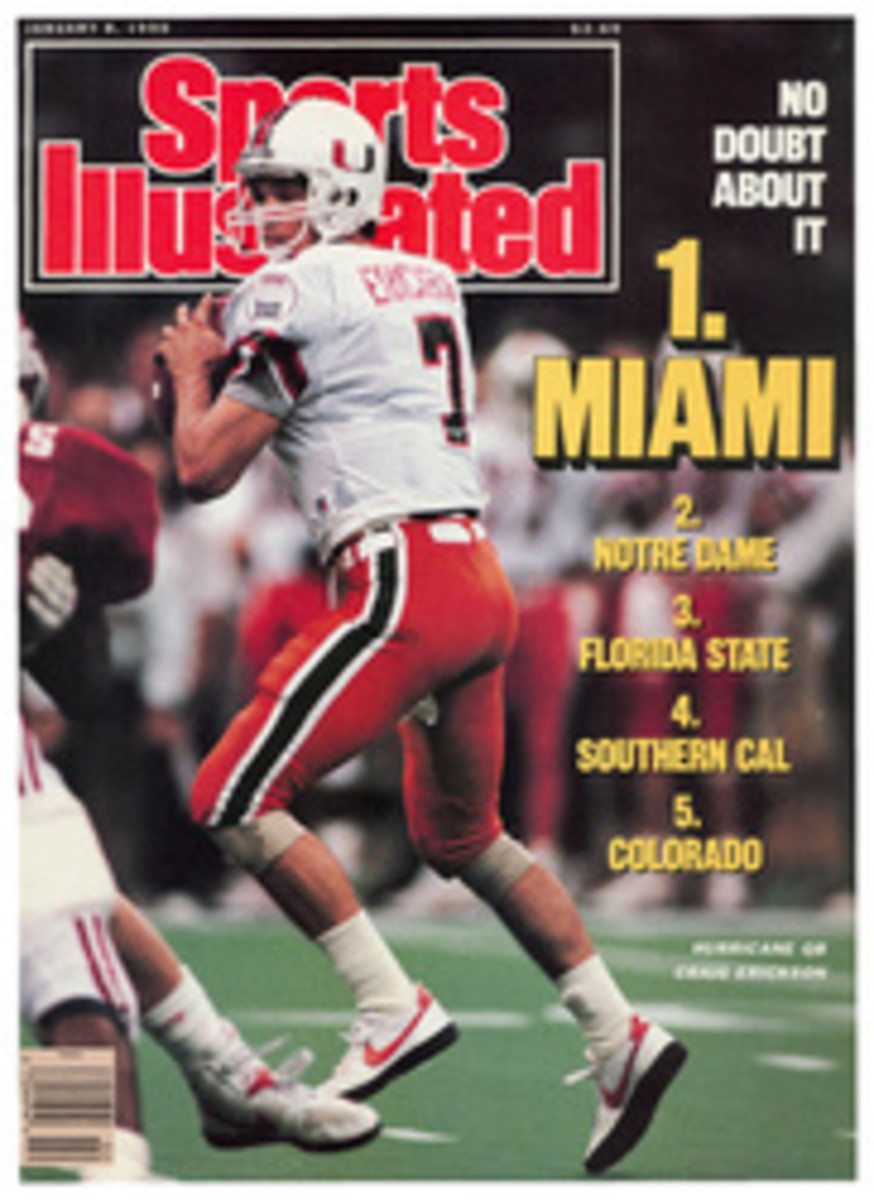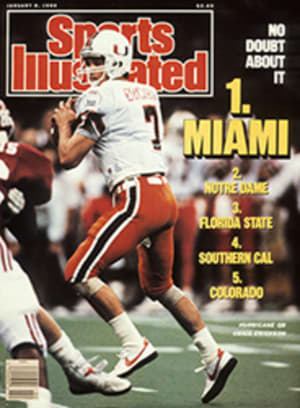
MAKING IT BIG IN THE SMALLS
Coach Don Meyer is looking at a picture on the brochure for his summer basketball camp at David Lipscomb University in Nashville. The caption reads "A Camper goes one on one with the Pro" and shows Mike Gminski, now of the 76ers, executing a reverse slam over a wobbly-kneed adolescent. Meyer points to the kid and says, "This little guy is Philip Hutcheson. He couldn't have been in junior high, I don't think."
Now 6'8" and 220 pounds, Hutcheson is no longer a little guy, and he would fare much better today against Gminski. Last season, as a junior, he averaged 28.0 points a game as the Bisons' center to finish 10th in the NAIA in scoring, and he led his team to 38 victories, one shy of the NAIA record. This season Hutcheson is scoring at a 24.2 clip, and Lipscomb, the consensus preseason No. 1 pick in the NAIA, was 16-3 and rated No. 5 through Sunday.
Dramatic growth is typical of Meyer's handiwork. Before he went to Lipscomb, in 1975, the Bisons had won 20 games only once in their 39 seasons of playing basketball; in Meyer's 14 years, they have won 30 games or more five times. And they won the NAIA national championship in '86. Meyer's first basketball camp, in 1976, had 188 players; last summer there were nearly 4,000 participants, making it the largest in the country. Three years ago, Meyer and his staff started selling instructional videotapes; they have since sold more than 8,000 to high schools and to colleges with prominent basketball programs.
Meyer has done all this at a school that rarely recruits outside Tennessee and Alabama; one that has rigid rules of conduct (it is affiliated with the Church of Christ, which doesn't cotton to things like drinking and dancing); and one whose players are "a little goofy," as guard Wade Tomlinson says. Last season these goofy guys scored 111.78 points a game, second only to Loyola Marymount in college basketball. At week's end, they were averaging 111.53 points in 1989-90.
The most public display of the Bisons' goofiness comes during pregame warm-ups. They begin with ordinary layup lines. Then they form rows for a drill in which a group of players shuffles back and forth in a defensive stance, following a ball being passed around by student assistants. When the ball goes to a wing, the players close in on it with their hands in the air, yelling, "Dead! Dead! Dead!" This call alerts teammates that an opponent has picked up his dribble.
Opposing crowds often taunt and mimic the Bisons during this drill. Says Tomlinson, "They love to rip us on that, but it kind of shows respect, that they're going to give you that much attention during your warmups."
In another drill, the Bisons pair up for "taking hits" as they practice drawing the charge on defense. "Taking hits" consists of one player simply running headlong into another and knocking him down. This exercise usually draws a few looks from the officials as well as from the opposing team.
Next the Bisons don red or green mesh jerseys and begin a half-court scrimmage, full speed. If the opposing team returns to the locker room for a pregame talk, the players' faces light up. Then they run full-court fast breaks.
Standing on the sideline, pacing and watching this planned mayhem, is Meyer. He resembles a taller, healthier Jerry Tarkanian. He chews on his fingernails instead of a towel.
By the time the Bisons finish their warmups, they are winded and dripping with sweat. "Pregame warmup," says Tomlinson, "is harder than any practice I had in high school."
After practices and games, win or lose, the players enter the locker room, and each immediately pulls out a three-ring binder. An unsmiling Meyer writes with a felt-tip marker on a white board. His players write with their pens in their notebooks, which they fill with notes on Meyer's remarks.
The idea is to force Meyer to organize and simplify his thoughts and help the players learn his system. "You don't just come in there and start talking," he says. "I've got to present my points one, two, three, because the players are taking notes. I like to look at Hutcheson's notebook, because if he doesn't get it, I know we're in trouble." Last year Hutcheson was named the Academic All-America Player of the Year in the college division, which encompasses all NAIA schools and those in the NCAA's divisions II and III. He has a 4.0 grade point average with a double major in political science and communications.
Meyer's philosophy, in essence, is this: The best way to get your players to do what you want is to make them into coaches. "You're not a fan when you watch a game," says 6'6" Darren Henrie, Lipscomb's best alley-oop dunker. "You get that into your head."
Lipscomb's lopsided winning margins and Meyer's 367-122 record have attracted attention in other parts of Music City. Last January, when C.M. Newton announced he was leaving Vanderbilt to become Kentucky's athletic director, Meyer was mentioned as a possible replacement. He doesn't completely rule out a move to Division I, but he prefers the life at Lipscomb. He says, "You can sweep the floor before practice, or you can deal with the media like they do in the ACC. I don't know which would be more fun, but I lean toward sweeping the floor. The only thing that would make me want to move to another level would be to prove that what we're doing here can be done there."
Meyer's influence extends to higher levels already, though, because of those instructional tapes and his camp. He started making the tapes in 1986 after he and assistant coach Ralph Turner watched videos of the NAIA tournament and saw that the Bisons were executing particularly well. They decided to use those clips to illustrate Meyer's system. For starters, they produced eight tapes, with Turner as editor. Now there are 16 videos in the series, each selling for $35; a complete set goes for $400.
Meyer's enthusiasm for the tapes has made him the subject of ribbing from his players and other coaches. When the subject comes up, one player recites, "Tape 22: Taking Showers with the Bisons." And when the NAIA preseason rankings for 1988-89 came out with Lipscomb on top, Meyer received a letter from Duke's Mike Krzyzewski, who wrote, "I cannot believe a guy who produces more instructional videotapes than he does players can actually be coaching a team that is rated number one in the pre-season."
If Coach K could observe a Bison camp, he might better understand how Meyer produces his players. Hutcheson and Tomlinson each attended the camp for more than seven years, and all the Lipscomb players teach at the camp. The system becomes second nature. "There's nothing better than teaching to learn something," says Meyer.
"All of us will say how much we hate camps, and they get old sometimes, but there's a benefit from being together year-round," says Tomlinson.
That togetherness probably helped Henrie improve the timing on his alley-oops, but the summers were more important for him in other ways. After working in his first camp, he became an elementary education major. "He's the best I've ever seen working with kids," says Meyer. If Meyer has any luck, some of those kids will come back to Lipscomb, just as Philip Hutcheson did.
PHOTO
LANE STEWART
Hutcheson has grown, both literally and figuratively, while studying at Meyer's knee.
PHOTO
LANE STEWART
The end of practice is hardly the finish of Meyer's lesson plan.

